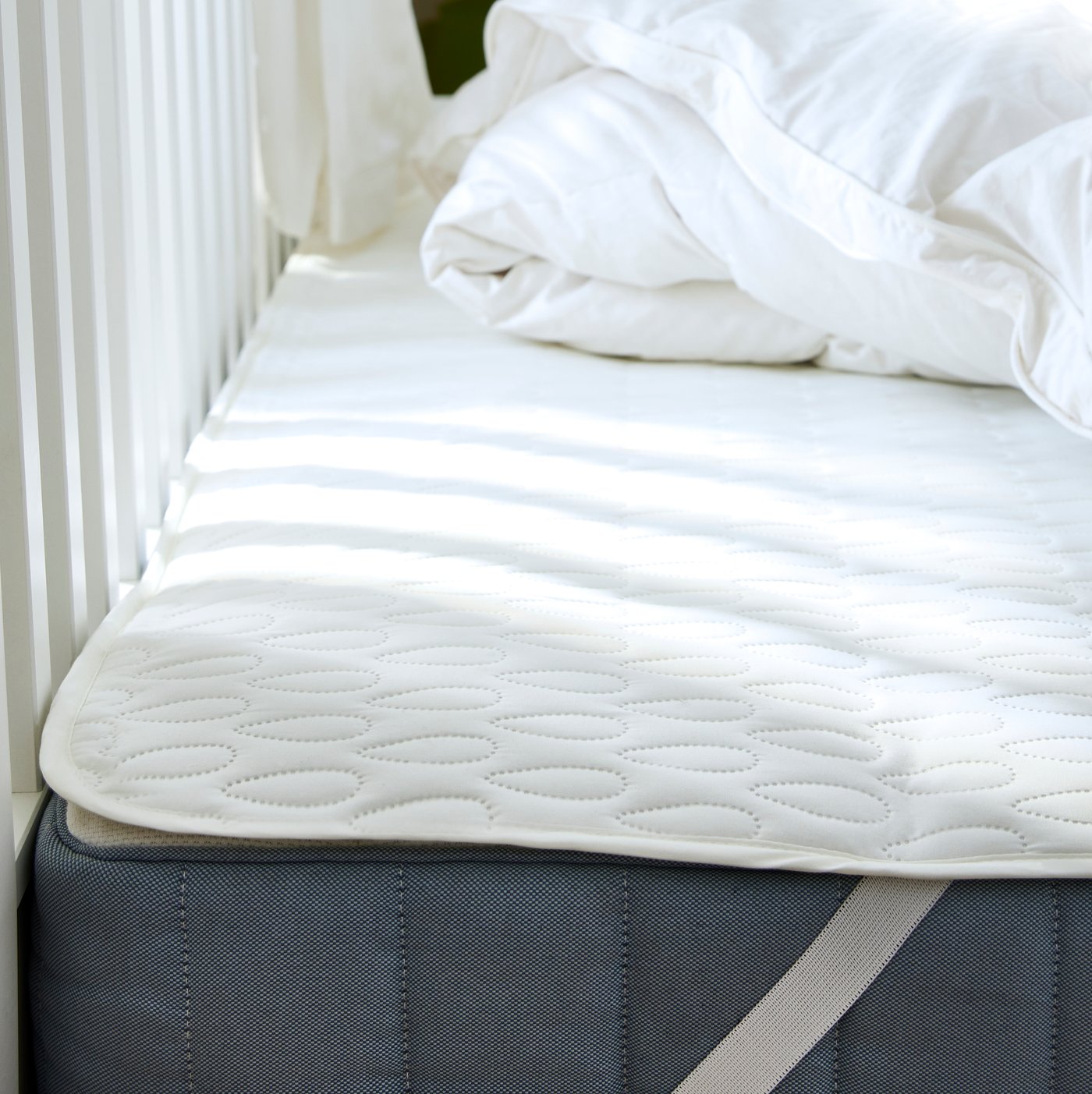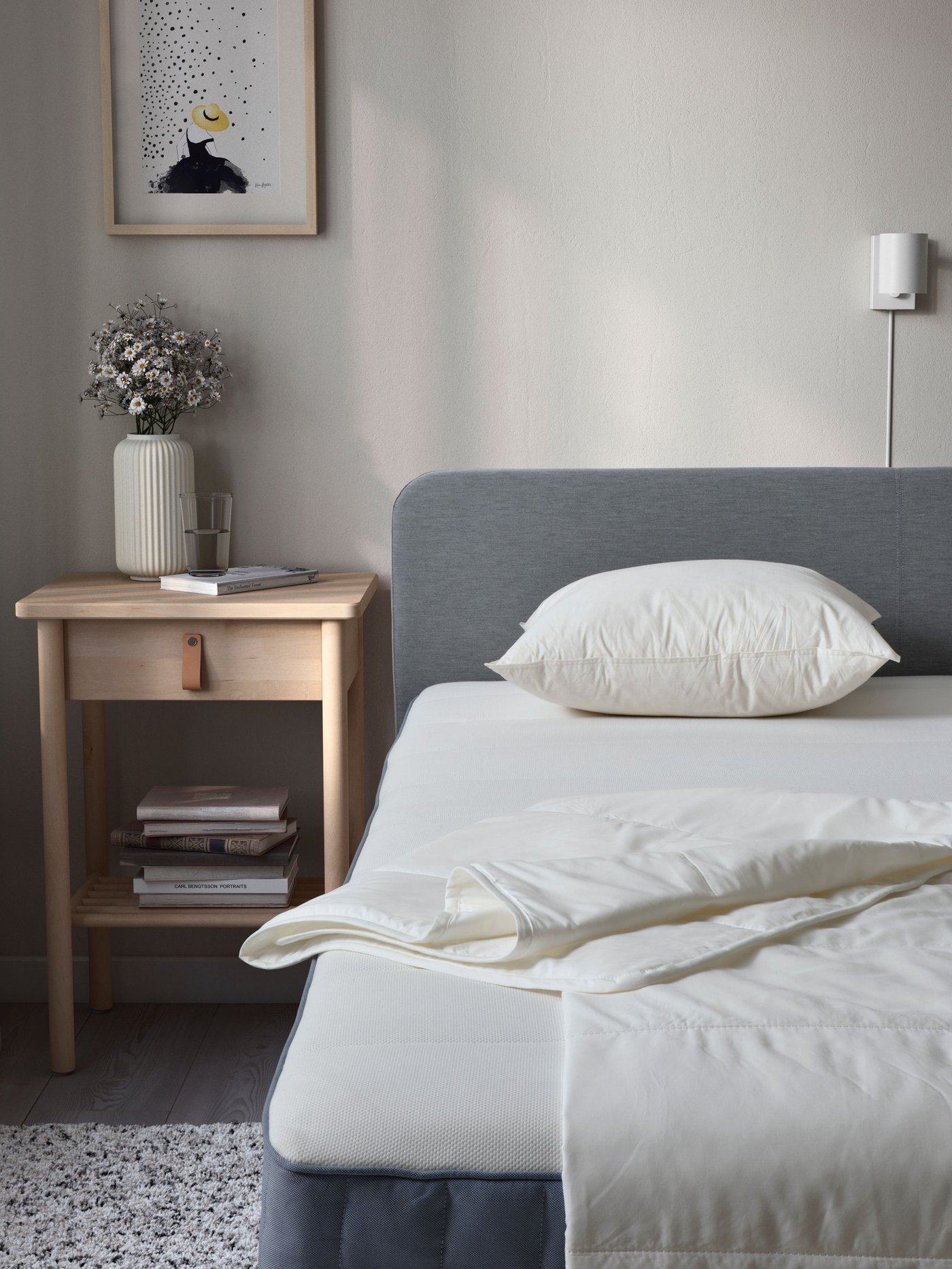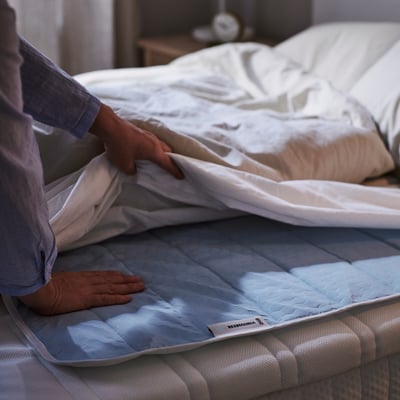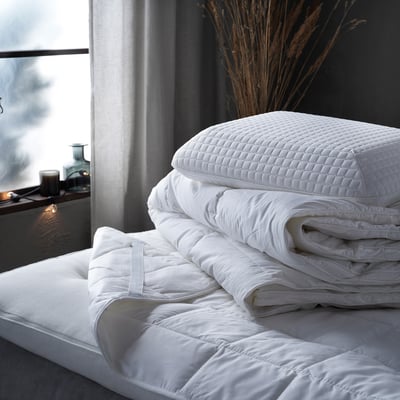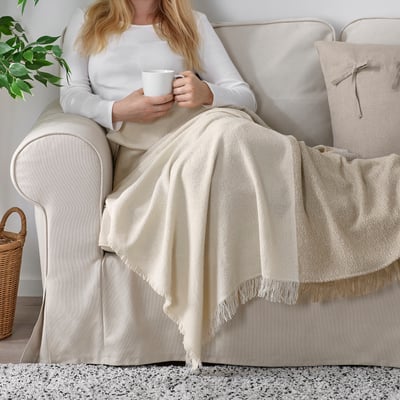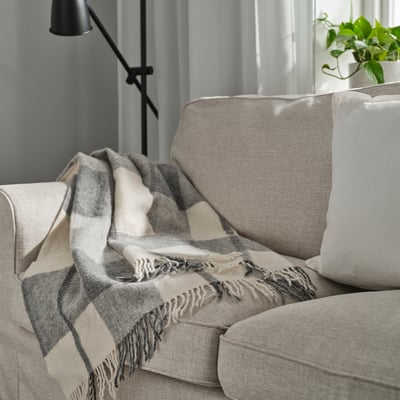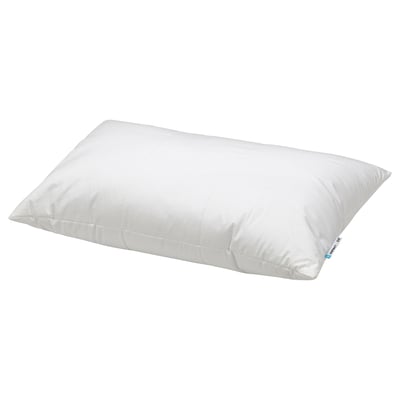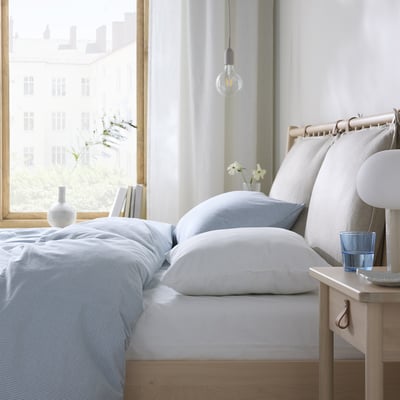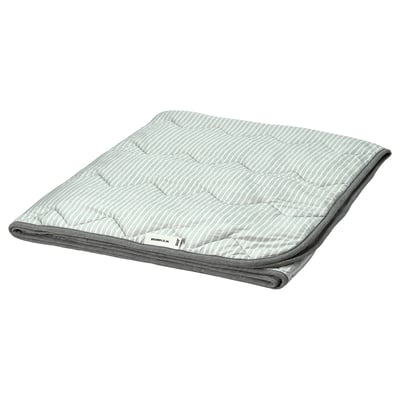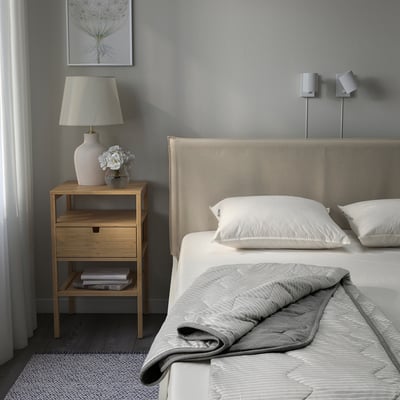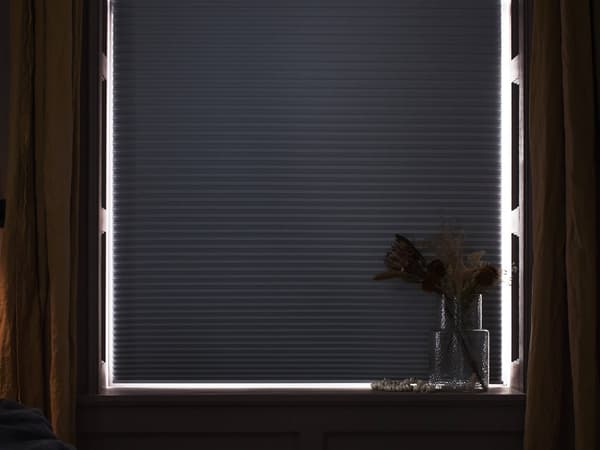Find your perfect sleep temperature
Duvets for your perfect sleep temperature
The best temperature for sleep can vary by individual with most adults finding their perfect temp between 20 to 25 °C
Light and temp control in one
Blackout curtains are a dreamer’s best friend. Not only can you block out pesky, unwanted streetlights, but they also maintain a comfortable temperature by blocking out drafts and sunlight. They’re also a lovely way to style up your bedroom with a blast of solid color or a fun pattern.
The importance of temperature in sleep quality
Temperature plays a crucial role in the quality of your sleep. Your body’s core temperature naturally decreases to initiate sleep, and maintaining the right ambient temperature can facilitate this process. Here’s how to find and maintain the ideal sleep temperature for a restful night.
Tips for achieving the ideal sleep temperature
Set your thermostat
Setting your thermostat to the right temperature is the first step. Here are some guidelines:
- Optimal Range: Aim to keep your bedroom temperature between 60-67°F (15-19°C). This range is considered optimal for most people.
- Adjust Seasonally: In winter, you might need to adjust your thermostat slightly higher and lower it in summer to maintain comfort.
Use breathable bedding
Your bedding can influence how warm or cool you feel during the night. Consider these tips:
- Material: Opt for breathable bedding materials like cotton, linen, or bamboo, which allow air to circulate and prevent overheating.
- Layering: Use multiple layers of blanket and throw , such as a light sheet and a heavier blanket, so you can adjust your warmth as needed.
Utilize fans or air conditioners
Fans and air conditioners can help regulate your bedroom temperature effectively. Here’s how to use them:
- Ceiling fans: Ceiling fans can create a gentle breeze and help cool the room without creating a draft.
- Portable fans: Portable fans can be positioned to direct airflow where you need it most.
- Air conditioners: Use air conditioners to cool your room during hot weather, ensuring the temperature stays within the optimal range.
Adjust your sleepwear
What you wear to bed can also affect your comfort. Here are some tips:
- Summer: Wear lightweight, breathable fabrics like cotton to stay cool.
- Winter: Opt for warmer sleepwear made from materials like flannel or fleece to retain heat.
Take a warm bath before bed
A warm bath can help regulate your body temperature. Here’s why it works:
- Core temperature frop: After a warm bath, your body temperature naturally drops, signaling to your body that it’s time to sleep.
- Relaxation: The warmth of the bath can also help relax your muscles and prepare you for a restful night.
Additional strategies for maintaining the ideal sleep temperature
Use a programmable thermostat
A programmable thermostat can help maintain a consistent temperature. Here’s how:
- Set Schedules: Program your thermostat to lower the temperature at night and raise it in the morning.
- Smart Thermostats: Consider using a smart thermostat that can learn your preferences and adjust the temperature automatically.
Insulate your bedroom
Proper insulation can help keep your bedroom at a stable temperature. Consider these tips:
- Windows: Use double-glazed windows to prevent heat loss in winter and heat gain in summer.
- Drafts: Seal any drafts around windows and doors to keep the temperature consistent.
Consider electric blankets or heating pads
Electric blankets and heating pads can help maintain warmth in colder months. Here’s how to use them safely:
- Electric blankets: Choose an electric blanket with adjustable settings to find your perfect warmth level.
- Heating pads: Use a heating pad to warm up your bed before you get in, but turn it off before falling asleep to avoid overheating.
Monitor humidity levels
Humidity can impact how warm or cool you feel. Here’s how to manage it:
- Dehumidifiers: Use a dehumidifier to reduce humidity in summer, which can make the air feel cooler.
- Humidifiers: In winter, a humidifier can add moisture to the air, making it feel warmer and more comfortable.
